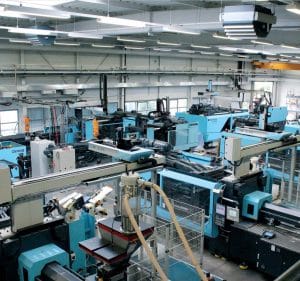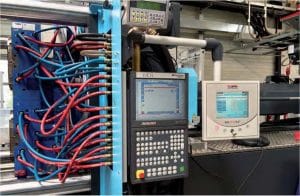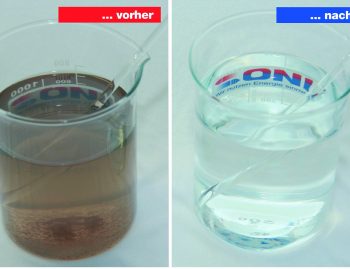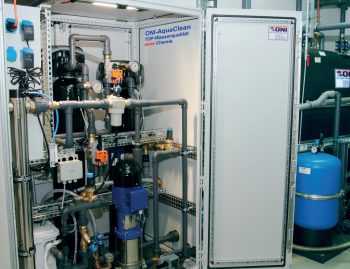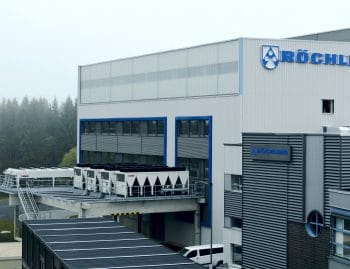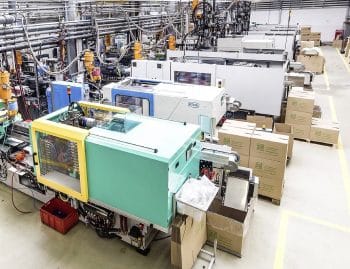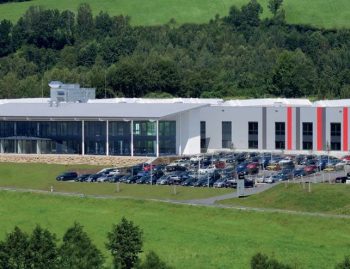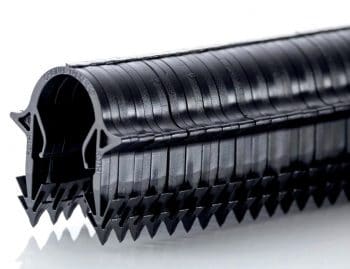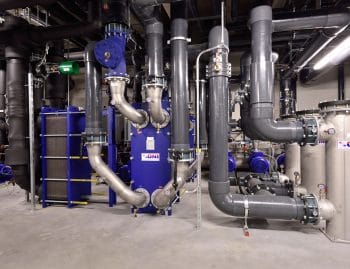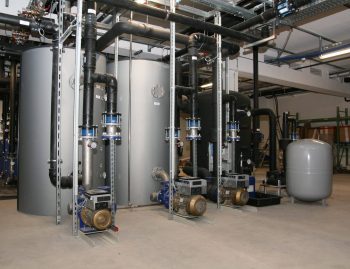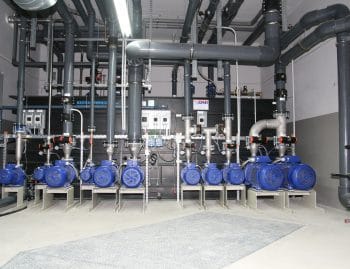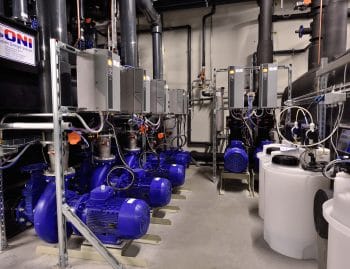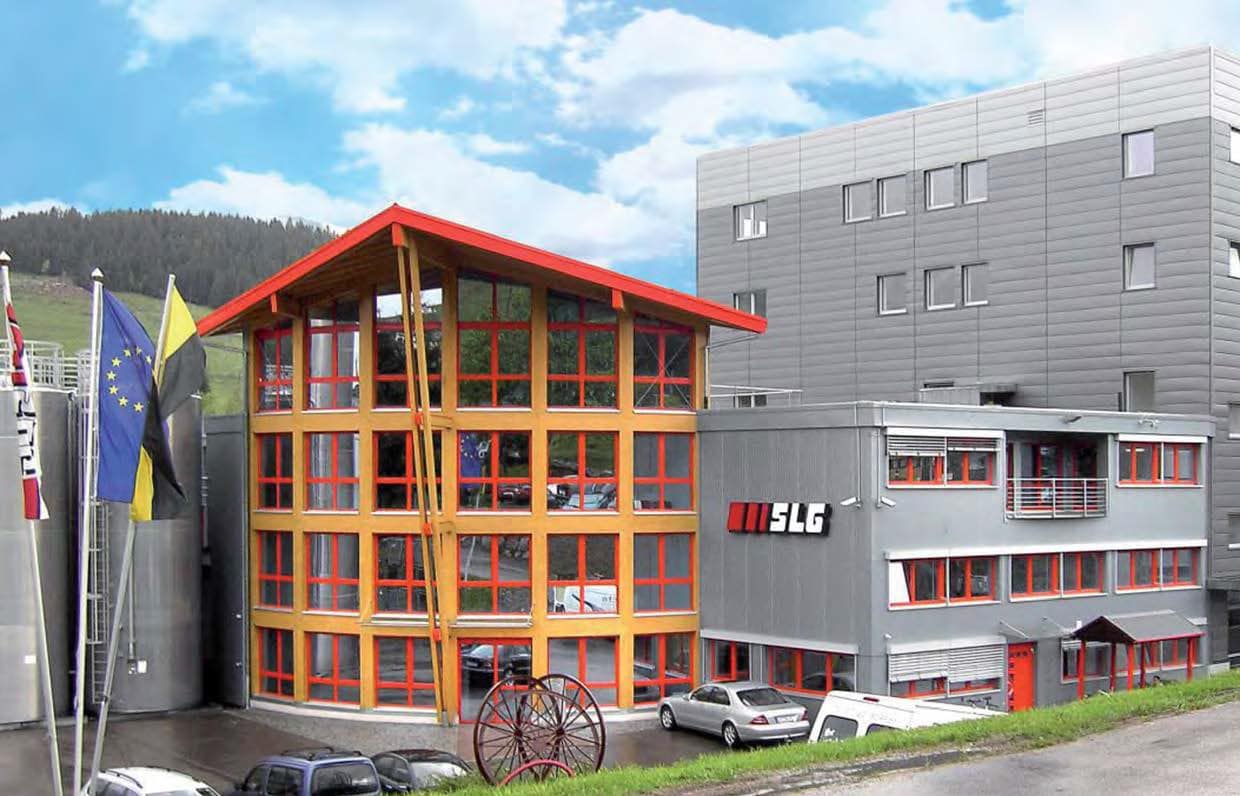
Founded by Walter Stockkamp and accompanied by his son Dieter Stockkamp, SLG Kunststoff GmbH started the production of plastic parts in 1978. The consistent implementation of an offensive energy saving policy and permanent process optimisation in production have made a significant contribution to the company's success. The continuity of our efforts in this field is documented by the current modernisation of cooling system technology and process technology in the field of mould temperature control.
SLG Kunststoff GmbH, with its two production sites in Heitersheim and Bernau, is an innovative and successful manufacturer of high-quality plastic products for a wide range of industrial sectors. Together with its customers, it develops products and system solutions. SLG offers a full service in the field of plastic injection moulding, ranging from tool development and toolmaking, single and multi-component injection moulding (also in clean rooms), thermoplastic foam moulding, cavity gas injection moulding, various in-mould processes to the assembly of complex assemblies. In addition to the efforts to maintain and further expand a hard-earned leading position in all disciplines of the service spectrum, the company management also keeps a constant eye on areas such as energy efficiency and process optimization in production. For years, the continuous price increase for energy sources has been observed very closely and responded with an ongoing campaign to improve energy efficiency. "As an energy-intensive company, it is clear to us that energy costs are becoming increasingly important and that competitiveness can only be maintained if we reduce energy consumption to a minimum. We have therefore been actively dealing with this issue for years and are consistently focusing on clever energy-saving concepts that have already been successfully implemented. For the implementation of the new cooling system concepts and the process optimization in the field of mould temperature control at both SLG locations, we have therefore brought on board the system specialist ONI as a partner, who has impressively convinced us with exemplary system solutions," Dieter Stockkamp explains his reasons for choosing a partner for energy and process optimization. Cooling circuit splitting creates energy saving potential.
SLG Kunststoff GmbH operates 48 injection moulding machines with clamping forces ranging from 250 to 15,000 kilonewtons at both locations. For SLG Kunststoff GmbH, it was clear from the outset that the new cooling water systems had to offer all economically viable options for particularly energy-efficient operation. Thus, the decision was made in favour of the cooling energy supply system presented by ONI and divided into two closed circuits. This system technology supplies the tool and machine cooling circuits with different temperatures via separate pipelines. A supply temperature of 12 or 15 degrees Celsius is provided for the tool circuits and 30 degrees Celsius for the machine cooling circuits. The system design as a dual-circuit cooling system and the selected temperatures in the network circuits ensure that extremely efficient energy-saving measures can be implemented in both areas of cooling energy generation. This enables the use of a so-called winter relief in the tool cooling circuit and the use of waste heat for heating purposes in the machine cooling circuit. Use expensive paid energy several times! Everyone who has to pay for energy costs certainly has this wish. Although this is impossible in most industrial sectors, there is a possibility for the plastics processor to use energy more than once. Hydraulic injection moulding machines convert part of the electrical drive power during their work into heat, which is found in the hydraulic oil. To dispose of this waste heat via recooling systems, more expensive electricity has to be used as drive energy. If, on the other hand, the thermal energy from hydraulic oil cooling is used for heating purposes, the waste heat generated by electricity is used sensibly. This means that part of the machine current is used twice and the additional energy required for the otherwise necessary recooling is no longer necessary. The waste heat from the machine cooling circuit is available at a temperature level of 35 degrees Celsius and is ideal for heating offices, workshops, warehouses or production areas via underfloor heating or air heaters developed for this purpose.
At SLG, the machine waste heat is used to heat office surfaces, toolmaking and storage areas. This low-temperature technology also offers a special advantage in terms of heat distribution in the room. Heating heat emitted by conventional heating systems naturally migrates by the shortest route to the ceiling of the room or hall, where it is normally not desired. Heating heat on a low-temperature basis mixes much faster with cooler room air, so that ultimately the heating heat reaches where it is really needed. The prerequisite for the multiple use of energy used in the machine cooling circuits is closed glycol-free cooling circuits, which are recooled via free coolers designed as self-draining systems. This ensures that the water quality in the cooling circuit can be kept consistently high and that frost protection is ensured even in the event of a power failure. Equipped with a so-called adiabatic system, the free coolers supply a sufficient cooling water temperature even at high outside temperatures.
Cooling machine operation reduced to a minimum
"To cool our injection molding tools, we need cooling water with a constant flow temperature of 12 or 15 degrees Celsius. In the past, we generated this cooling water throughout the year with cooling machines. Due to constantly rising electricity prices, we are forced to implement every economically justifiable saving measure in this area so that our energy costs do not run away. The ONI winter relief was exactly the solution. The results achieved are impressive," is how Dieter Stockkamp describes the situation in the cold water supply sector.
Chillers are energy guzzlers and ensure high electricity consumption and a correspondingly high electricity bill. Against this background, chillers should therefore only be used when absolutely necessary. At SLG, the ONI concept provides for cooling energy supply via chillers only during the warm summer months and a transitional period. Approximately 65 percent of the production hours are not used with chillers. This saves a great deal of energy and thus operating costs for electricity. In cooler seasons, the cooling energy supply for the tool circuit is relieved by a so-called winter relief. This technology uses part of the existing free coolers, which are completely available for hydraulic cooling during the summer months. As soon as the outside temperature falls below the temperature of the return water from the mould cooling circuit, recooling begins via the glycol-free, idle free cooler.
The idling function without auxiliary energy ensures frost protection of the free coolers in all operating situations, even without the use of glycol. This not only results in a much higher efficiency of the system, but also relieves the operator of safety regulations and expected safety requirements. If the outside temperature falls a little below 12 or 15 degrees Celsius, the free cooler takes over the full capacity of the chiller with an energy consumption that only accounts for two to three percent of the energy consumption of the chiller. The chillers are then simply switched off from this point. With this winter relief, the ambient air, which is available free of charge, is used as the cooling medium during the transition and winter seasons and thus replaces the electrical energy required for the chiller. Even the most powerful system needs to be optimally organized if it is to get by with a minimum of energy. For this reason, a dynamic management system developed by ONI is responsible for organizing the energy supply at SLG. The focus is on a PLC module with the energy-optimizing ONI system software. This is where all information on the system status of the entire system converges, is evaluated and from here the essential system components receive all the necessary commands. For example, the control system immediately detects when the chiller can be relieved and automatically switches on the free cooler. This ensures that the winter relief remains active for as long as possible because every hour the chiller remains switched off is worth cash for the operator. The situation is similar with regard to the organisation of heat recovery. If heating is required in a company division, the corresponding output from the machine cooling circuit is made available. The resulting reduction in recooling capacity then results in a reduction in the free cooler capacity, which also saves electricity.
Rhytemper® ensures process optimization
Quality, process stability and unit costs in injection moulding production are essentially determined by mould temperature control. The process managers at SLG, on the other hand, quickly recognized the advantages of the dynamically operating Rhytemper® mould temperature control. The quality of SLG plastic parts and unit costs are decisive factors when it comes to customer loyalty and competitiveness. In the case of some products, it was shown that conventional temperature control technology was difficult to achieve the required product quality and that the necessary short cycle times could not be achieved. This problem had to be solved with the dynamic Rhytemper® system. In order to obtain an objective comparison between conventional temperature control technology and dynamic systems, comparable conditions had to be created.
The operating and production processes were optimized in advance and all possibilities of conventional temperature control technology were exhausted. Only after this optimization had been realized and results regarding quality, process stability and cycle time were available, production was continued using Rhytemper® technology. The results in this area were very convincing. The cycle times and the energy expenditure could be massively reduced as well as the reject rate noticeably. An additional plus was that the load on the mold cooling circuit was noticeably reduced.
"If one takes the time from the first consultation to the turnkey handover of the entire system, adds up the smooth course of the project and the convincing energy saving result, one arrives at a very good result, which speaks for the excellent cooperation with the ONI experts. Together, we implemented a project that ensures that our energy costs remain at an absolute minimum through the use of state-of-the-art energy-saving technology and that we thus secure our competitiveness to a certain extent," says Dieter Stockkamp.


